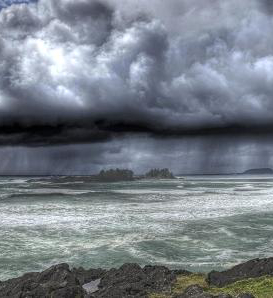Stalagmite study shows enhanced ENSO
 Scientists say past El Niño events in the Pacific Ocean may have amplified global climate fluctuations for hundreds of years at a time.
Scientists say past El Niño events in the Pacific Ocean may have amplified global climate fluctuations for hundreds of years at a time.
An Australian team has helped uncover century-scale patterns in Pacific rainfall and temperature, and linked them with global climate changes in the past 2000 years.
For example, northern hemisphere warming and droughts between the years 950 and 1250 corresponded to an El Niño-like state in the Pacific, which switched to a La Niña-like pattern during a cold period between 1350 and 1900.
“The tropics are a complicated, yet incredibly important region to global climate and it’s been great to untangle what’s happening,” said researcher Alena Kimbrough, a PhD student at ANU.
“The current models struggle to reflect century-scale changes in the El Niño Southern Oscillation (ENSO).
“We’ve shown ENSO is an important part of the climate system that has influenced global temperatures and rainfall over the past millennium.”
The team measured trace elements and stable isotopes in stalagmites from the Indonesian island of Flores to reconstruct ancient rainfall, and compared it with records from East Asia and the central-eastern equatorial Pacific.
The El Niño Southern Oscillation is an irregular variation in winds and sea surface temperatures over the tropical eastern Pacific Ocean.
In one extreme it brings high temperatures and drought to eastern Australia and Indonesia, and the opposite extreme, known as La Niña, heavy rainfall and storms.
“In the past decade or so the rise in global temperature had a brief reprieve, the so-called warming hiatus, which can be partly attributed to a persistent La Niña pattern over that period,” Ms Kimbrough said.
The new work found periods of predominantly El Niño-like patterns for several hundred years that alternate with La Niña patterns, impacting on global climate over the last 2000 years.
“Until we can model this lower-frequency behaviour in the tropical Pacific, one can only speculate on how the warming will play out over the next few decades,” said lead author Dr Michael Griffiths from William Paterson University, in the United States.








 Print
Print